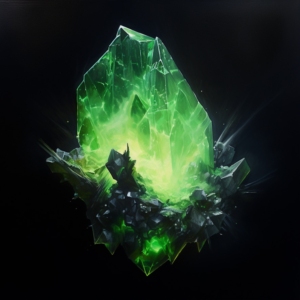I’m going to share an observation 15+ years in the making. It’s not a simple 3-step process. It’s not going to be quick and easy.
But, it will be worth it.
Today, I’m going to talk about patterns, how to find and understand your superpowers, and how to develop greater self-acceptance and deeper self-awareness.
Then, I want to show you how doing this work for yourself inevitably leads to a single idea that will help you change the world.
Patterns
Maybe it’s my ADHD & Autistic-fueled ability to recognize patterns but I’m starting to think that the underlying code of becoming superhuman has been right in front of us the entire time.

I’ve been writing on this site since 2008. Over the years, I’ve noticed that even as the world around me changed and my professional circumstances evolved, when I sat down to write, certain topics and ideas kept coming up again and again. The same problems would resurface over and over. The same strengths continued to be useful and grew to be even more useful. The same frustrations and criticisms can be seen recurring across the years.
It’s not just in myself, I saw the same thing with clients over the last 15 years.
It became clear: we all have patterns that repeat.
Have you stopped to notice the patterns that you’re repeating?
Finding Patterns

If you aren’t clear about your patterns, you might start by attempting to notice them in your thoughts and behaviors.
This is easier the more you write, and the more you reflect on your conversations, accomplishments and struggles. I’ve found that both writing regularly and hosting a podcast have given me ample opportunities to see my values in action, as well document the evolution of my thoughts and behaviors.
Here are some of the things you might look for…
- What consistently frustrates, bothers, and angers you?
- What consistently fascinates and excites you?
- What scares you?
This is important because it’s only once you see a pattern, that you have the opportunity to examine it and try to understand its source. It’s only once you see the various patterns together that you can understand their relationship to one another, or understand what type of pattern it is.
This is your source code and seeing it is the only way to rewrite it.
Types of Patterns

It’s natural once you notice the same problems or challenges coming up to get upset or judge yourself. It’s easy to see it as a personal failing rather than a feature/bug of your unique operating system. That, too, is useful information; where do those judgements come from? I find that it’s helpful to try and see the patterns without judgement, accepting them as raw data. There are a lot of different types of patterns to look for.
Here are a few…
- Strength Patterns: behavior or thoughts that come naturally or easily to you
- Difficulty Patterns: behaviors or thoughts that you struggle with or have trouble overcoming
- Interest Patterns: behavior, thoughts, or ideas you find yourself curious about
- Frustration Patterns: behavior, thoughts, or ideas you feel stifled by or feel a calling to fix
There are many more and you can categorize them any way you want. The important thing is to notice what programs you have running in the background.
How to Find Superpowers

Now that you’ve done some work identifying your patterns, we’re ready to find your superpowers. To find your superpowers, you’re going to have to interrogate your patterns. You’ll need to ask why something became a strength, why something is difficult for you, why something interests you, and what causes something to frustrate you. Underneath those patterns, are breadcrumbs to your past.
If you want to find your superpowers, you don’t need to consult a comic book, because you will find the same answer in the real world. Just follow the breadcrumbs.
Trauma and Fear

Here’s the uncomfortable truth: Superpowers are most frequently brought about by an overreaction and over-rotation away from trauma and fear.
While we’d prefer to believe that our gifts are God-given and pre-ordained or simply the work of good old-fashioned hard work, a deeper analysis reveals a different story. Most of the things we do at a high-level result not from running toward something, but from running away from something. No one arrives at adulthood unscathed by childhood and adolescence.
- Perhaps we grew up in a home where we came to fear being unworthy of love if our grades weren’t good enough or we didn’t become the best at something.
- Maybe an unexpected illness or death in our lives left us hyper-vigilant and always moving forward so as not to waste a second.
- Is it possible that the gregarious and outgoing personality that’s so useful now, was once a way to hide how we felt different, or the only way to get attention in the home?
We do not develop in test tubes but in the laboratory of real life. Much like plant and animal species develop camouflage, clever hunting techniques, and strategies that maximize survival, so too do we develop adaptations in our social environment.
If you want to find your superpowers, start looking at your past. Look for your trauma and your fear. When you find it, look for how you grew to protect yourself. Find the abilities you developed to thrive amidst uncertainty.
If you do that work and find one of your superpowers, there’s something else you’ll need to know.
Kryptonite

I just read The Unauthorized Biography of Superman by Glen Weldon. In the book, Weldon makes the point that the character of Superman was the ultimate immigrant story. A fantastic allegory about new beginnings and his abilities were metaphors for “limitless potential and opportunities” representing the American Dream. Kryptonite, the only substance that can harm Superman, is a piece of his home world that he left behind, it is a memory of the past.
Our kryptonite comes from the same experiences and traumas that give us our superpowers. The over-rotations that protect us, reveal what we fear. When we’re not mentally and emotionally healthy, we lean too heavily on our abilities, failing to realize that what we think makes us strong, may actually be slowly destroying us.
- If your superpower is productivity, your kryptonite might be burnout.
- If your superpower is influence, your kryptonite might be manipulation or loss of self.
- If your superpower is speed, your kryptonite might be depth.
- If your superpower is kindness or responsibility, your kryptonite might be failing to create boundaries.
There is always a cost, and the key to keeping those costs low is found self-awareness.
The Single Idea
At the start of this post, I promised a single idea that can help you change the world. Throughout the post, it was subtly implied but not stated. This is the most important point of this post that will help you play a part in building a world that is kinder, safer, and more equitable.
The patterns, superpowers, and weaknesses you’ve discovered in yourself, are uniquely coded to you and that means that each person you encounter has their own unique underlying code.
While it sounds simple, I’ve found that only those who do the work on themselves have the perspective that allows them to extend grace to others for their differences.
- Just as you have patterns you may not have noticed, so do others
- Just as you have patterns that will not change, so do others
- Just as you have patterns that you embrace, so do others
It is not your job, nor your right, nor even within your ability to change someone else’s code. You cannot apply your patterns or rules to others and expect them to fall in line. When you go through your own path of self-discovery, this should become obvious. We don’t choose who we become, so much as we make peace with how we became this way and try to understand who we are becoming.
An Invitation to Commit
Knowing this, there are two things I invite you to commit to doing.
- Make an environment that is safe for people to be themselves, in all of its messiness. Give people the space, and build the level of trust that opens the door for them to tell you about their patterns, so you don’t waste a lot of time and energy trying to work against it.
- Be curious about what makes each person unique so that you can help them in their quest to discover their own greatness.
You don’t know someone’s whole story, just as they don’t know yours.
No one owns a world that is kind, safe, and equitable. It belongs to all of us, which means it’s also the world where we all must have the right to belong.


